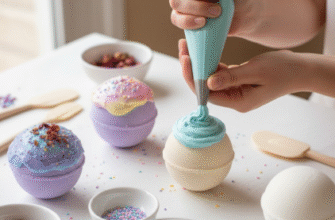That feeling of wrapping yourself in a soft, absorbent bath towel after a warm shower or bath is one of life’s simple pleasures. Towels are workhorses in our homes, used daily, washed frequently, and expected to perform consistently. But like all textiles subjected to constant use, moisture, and laundering, bath towels don’t last forever. Eventually, that plush, thirsty towel becomes thin, scratchy, and less effective. Knowing when to say goodbye and replace your bath towels isn’t just about maintaining that luxurious feeling; it’s also about hygiene and efficiency.
Unlike milk with a clear expiration date, towels don’t come with a built-in timer telling you when they’re past their prime. The lifespan of a bath towel depends heavily on several factors: the quality of the cotton or fabric blend, the weave, how often it’s used, how it’s cared for, and even the hardness of your water. A high-quality towel made from long-staple cotton (like Egyptian or Pima) will naturally outlast a cheaper, thinner towel. Similarly, a towel used daily and washed harshly will wear out faster than one used occasionally and laundered gently.
Understanding Towel Wear and Tear
Every time you use and wash a towel, its fibers undergo stress. The friction from rubbing against skin, the tumbling action in the washer and dryer, and the detergents used all contribute to the breakdown of the fabric over time. The tiny loops (terry loops) that give towels their absorbency can become flattened, frayed, or broken. Residue from detergents and fabric softeners can build up, making the towel less absorbent and sometimes even stiff or slightly water-repellent.
Hard water minerals can also embed themselves within the fibers, contributing to stiffness and reduced absorbency. While proper washing techniques can mitigate some of this, the physical degradation of the fibers is inevitable. Think about how many times a single towel goes through the cycle of absorbing water, being laundered, and drying – it’s a demanding job!
Key Signs Your Towels Need Replacing
Instead of sticking to a rigid timeline, pay attention to the signs your towels are giving you. Here are the most common indicators that it’s time for an upgrade:
1. Decreased Absorbency
This is perhaps the most crucial sign. A towel’s primary function is to absorb water. If you find yourself rubbing and rubbing, only to feel like you’re just pushing water around on your skin, the towel has lost its mojo. The fibers are likely damaged or coated in residue, preventing them from effectively soaking up moisture. A good towel should leave you feeling dry relatively quickly.
2. Lingering Odors
Do your towels smell musty or mildewy even right after laundering? This is a big red flag. Over time, bacteria and mildew can build up deep within the fibers, especially if towels aren’t dried completely between uses or after washing. While occasional smells might be fixed with a vinegar or baking soda wash, persistent odors often mean the buildup is too ingrained, and the towel is no longer hygienically clean, even if it looks okay.
Verified Check: A persistent musty smell, even after thorough washing and drying, is a strong indicator that bacteria or mildew has embedded deeply into the towel fibers. At this point, for hygiene reasons, replacement is highly recommended. Don’t ignore recurring odors, as they signal the towel is no longer getting truly clean.
3. Visible Wear and Tear
This one is pretty straightforward. Look for obvious signs of damage like:
- Fraying edges: The seams and hems are often the first places to show wear. Once they start unraveling significantly, the towel’s structure is compromised.
- Rips and holes: Small snags can sometimes be trimmed, but larger tears or holes mean the fabric is weakening and likely to get worse quickly.
- Thinning patches: Hold the towel up to the light. If you can see through it easily in certain areas, the fibers have worn away, reducing both absorbency and durability.
4. Roughness or Scratchiness
Remember how soft that towel felt when it was new? If it now feels rough, stiff, or scratchy against your skin, even after washing correctly (without overuse of detergent or fabric softener), the fibers have likely become damaged or coated with mineral buildup from hard water. While some softness can be restored, significant texture change usually signals the end of its comfortable life.
5. They Simply Don’t Feel ‘Right’ Anymore
Sometimes, a towel just loses its satisfying weight and plushness. It feels limp and lifeless. While it might still technically function, using it is no longer a pleasant experience. If your towels feel more like thin rags than comforting wraps, it’s okay to replace them simply because you want that feeling of quality back.
So, How Often? The General Guideline
While the condition of the towel is the ultimate deciding factor, most experts and manufacturers suggest a general lifespan for bath towels used regularly (meaning several times a week and washed accordingly). The most common recommendation is to replace your bath towels every 1 to 3 years.
Why the range? Again, it circles back to quality, use, and care. A premium, well-cared-for towel might lean towards the 3-year mark or even slightly beyond, while a lower-quality or heavily used, harshly washed towel might barely make it past a year before showing significant signs of wear. Think of it less as a strict rule and more as a prompt to start evaluating your towels closely once they hit that age range.
Why Bother Replacing Them?
Using old, worn-out towels isn’t just about missing out on comfort. There are practical reasons to refresh your towel stash:
- Hygiene: As mentioned, old towels can harbor bacteria and mildew more easily, even with regular washing.
- Efficiency: Worn towels don’t absorb water well, meaning it takes longer to dry off.
- Skin Health: Scratchy towels can be irritating to sensitive skin.
- Guest Experience: Offering guests thin, raggedy towels doesn’t make the best impression.
Investing in new towels periodically ensures you have effective, hygienic, and comfortable tools for drying off.
Tips for Extending Towel Lifespan
While replacement is inevitable, you can maximize the life of your towels with proper care:
- Wash Before First Use: This removes any factory finishes and helps improve initial absorbency.
- Wash Regularly: Don’t let damp towels sit for days. Wash after every 3-4 uses.
- Use Less Detergent: Too much detergent leaves residue. Use about half the recommended amount.
- Avoid Fabric Softeners: These coat fibers, reducing absorbency. Use distilled white vinegar (about half a cup) in the rinse cycle occasionally to soften and remove residue instead.
- Wash in Warm Water: Hot water can break down fibers faster over time. Warm water is usually sufficient for cleaning. Wash whites and colors separately.
- Don’t Overload the Washer: Towels need room to circulate and rinse properly.
- Shake Towels Out: Before putting them in the dryer, give towels a good shake. This helps fluff the terry loops.
- Dry Thoroughly: Ensure towels are completely dry before folding and storing to prevent mildew. Avoid over-drying on high heat, which damages fibers. Medium heat is often best.
- Address Snags Promptly: If you see a pulled loop, snip it off with scissors. Don’t pull it, as this can unravel more loops.
Making the Switch
When you decide it’s time, don’t just toss the old towels! They can be repurposed for cleaning rags, pet bedding, donated to animal shelters (check their requirements first), or used for messy household tasks. Consider phasing out old towels gradually as you bring in new ones.
Ultimately, the decision of when to replace your bath towels rests on their performance and condition. Pay attention to how they look, feel, smell, and how well they dry you. While the 1-3 year guideline is helpful, let your senses be the final judge. Keeping a fresh, functional set of towels is a small luxury that makes a daily difference.








